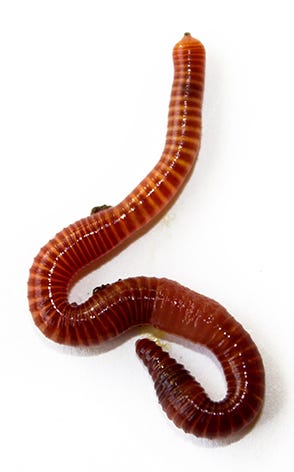Healthy red worms: How to start composting
Healthy red worms: How to start composting
Blog Article
Utilizing Red Wigglers for Effective Organic Waste Disposal
The usage of red wigglers for organic waste disposal presents an engaging technique to managing food scraps while advertising environmental sustainability. These worms not just enhance waste decay yet additionally yield important worm spreadings, which can dramatically improve soil health and wellness. Their capacity to refine huge quantities of organic product with marginal effort placements them as an obtainable solution for households and communities alike. Recognizing the subtleties of establishing up a successful worm container and keeping an ideal environment is important for maximizing their benefits. The next action in this process may shock you.
Benefits of Using Red Wigglers
Among the most compelling benefits of making use of red wigglers for natural garbage disposal is their impressive effectiveness in composting. These worms, clinically called Eisenia fetida, are particularly adjusted for breaking down organic materials, enabling them to refine waste as much as two times their body weight each day. This quick decay not just increases the composting process yet likewise produces nutrient-rich worm spreadings that dramatically improve dirt quality.
Additionally, red wigglers add to a reduction in garbage dump waste. By diverting organic materials from garbage dumps, they aid minimize methane exhausts-- a potent greenhouse gas. This eco-friendly advantage is critical in the fight versus environment adjustment.
Additionally, red wigglers are low-maintenance and can prosper in various atmospheres, making them available for both beginner and knowledgeable composters. Their capacity to duplicate promptly makes sure a stable populace, promoting recurring waste processing.
Establishing Up Your Worm Container
Creating an efficient worm bin is vital for maximizing the advantages of composting with red wigglers. The initial step is choosing an appropriate container. A bin constructed from plastic or wood, with an ability of 10 to 20 gallons, is excellent. Guarantee the bin has sufficient drainage openings to avoid excess dampness, as red wigglers flourish in a moist yet not soggy setting.
(red wigglers for sale near me)Following, prepare the bedding material, which offers as the worms' habitat and food resource. The container should be placed in a dark, temperature-controlled location, preferably between 55 ° F and 77 ° F, to maintain worm task.
Once the bin is established up, present the red wigglers, permitting them to acclimate to their brand-new atmosphere. A properly maintained container will certainly not only support the health of the worms but likewise promote effective decay of organic waste.
(Lake Hickory Bait)
What to Feed Red Wigglers
An understanding of the ideal diet regimen for red wigglers is crucial for keeping a healthy worm populace and enhancing composting performance. Red wigglers prosper on a varied diet that primarily includes natural products. Suitable food sources consist of vegetable scraps, fruit peels, coffee grounds, eggshells, and shredded paper. These products not just offer necessary nutrients yet also add to the moisture balance within the worm bin.
It is essential to avoid certain foods that can damage the worm populace. Red wigglers must not be fed meat, milk items, oily foods, or refined products, as these can bring in insects and create unpleasant smells. red wigglers. Furthermore, citrus fruits and spicy foods need to be decreased, as their acidity can be detrimental to worms
To advertise optimal food digestion, food needs to be chopped into smaller items, facilitating quicker failure and usage. Introducing food in small amounts is also important; overfeeding can lead to anaerobic conditions and attract unwanted bugs. Monitoring the worm bin for food intake rates will certainly assist make sure that red wigglers are receiving an appropriate diet regimen while preserving a reliable composting setting. Correct feeding methods are essential for cultivating a prospering ecosystem within the worm bin.
Maintaining Your Worm Environment
A properly maintained worm habitat is crucial for the health and productivity of red wigglers. To make certain optimum problems, it is critical to check temperature, moisture, and aeration within the worm bin. Red wigglers grow in a temperature level array of 55 to 77 levels Fahrenheit. Exceeding this variety can worry the worms, so it's essential to position the container in a suitable area far from direct sunlight and extreme temperatures.
A good rule of thumb is to preserve dampness at approximately 70% to 80%. If the bed linen comes to be also wet, it can lead to anaerobic problems that are damaging to the worms.

Making Use Of Worm Spreadings in Gardening
Rich in nutrients and advantageous microbes, worm castings act as an extraordinary natural plant food for gardening. Generated via the digestive procedures of red wigglers, these castings contain a range of essential nutrients, consisting of nitrogen, phosphorus, and potassium, which promote robust plant growth. Unlike artificial plant foods, worm spreadings use a slow-release mechanism, making sure that nutrients are available to plants over an extensive duration, thus lowering the risk of nutrient leaching and soil deficiency.
Along with nutrition web content, worm castings enhance soil structure and oygenation, boosting dampness retention and drainage. The microbial life existing in worm castings helps to subdue microorganisms and advertises a healthy and balanced dirt ecological community, more profiting plant health and wellness. When incorporated into the soil or used as a top dressing, worm spreadings can dramatically boost seed germination rates, origin development, and overall plant vitality.
For ideal results, garden enthusiasts should use worm spreadings at a rate of 1-2 inches per square foot, blending them right into the dirt or including them right into potting blends. In general, making use of worm castings is an environmentally friendly method to enriching dirt fertility and making sure growing garden settings.
Final Thought

Report this page